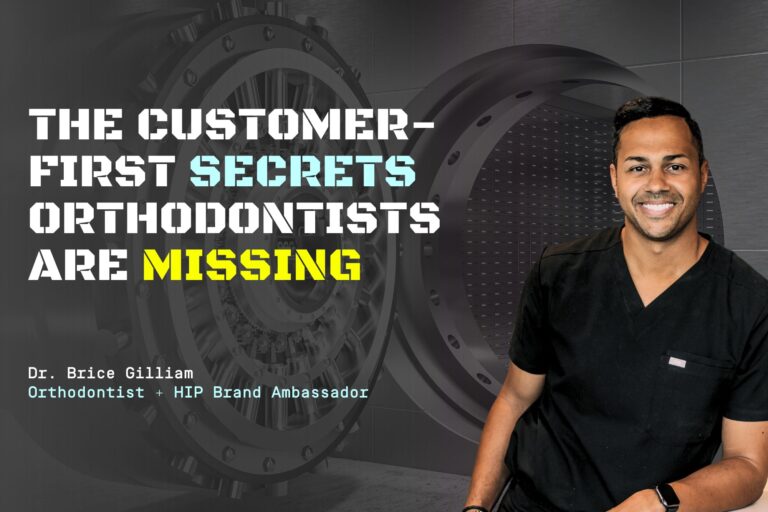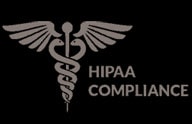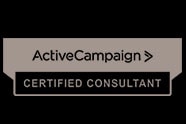Patient follow-up plays a crucial role in the success of your dental practice. Outstanding patient follow-up is vital for delivering top-notch dental care, boosting patient satisfaction, and driving repeat business. When you implement an effective dental patient follow-up system, you ensure better outcomes for both your patients and your practice.
In this article, we will look at the significance of patient follow-up in dentistry and discuss the critical elements of a successful follow-up system. We’ll also give you some practical tips on integrating a follow-up system into your dental practice.
Prioritizing patient follow-up will help you enhance your patients’ overall experience and bolster your dental practice’s success. So let’s uncover how it can positively transform dental practice.
Why Should You Follow Up With Your Patients?
Following up with your dental patients goes beyond just scheduling routine cleanings and checking up on dental work — it’s a process of building a relationship with your patients that starts from their first visit.
Some dentists think that repeated follow-ups annoy busy patients. But the opposite is true — effective follow-up is essential for building trust, enhancing patient satisfaction, and maintaining a healthy patient-dentist relationship. When you follow up with patients, you can alleviate your patients’ concerns, reinforce treatment plans, and ensure that your patients stay on schedule for much-needed dental treatments.
Here are a few ways an effective dental follow-up system can help you help your patients:
Facilitate Education
During follow-up appointments and messages, dentists can take the time to educate patients about proper oral hygiene techniques, the importance of a balanced diet for dental health, and the potential risks of particular habits like smoking or teeth grinding. By providing this education, dentists empower their patients to take control of their oral health and make informed decisions.
Monitor Progress
In addition to education, patient follow-up allows dentists to monitor the progress of any ongoing treatments. For example, suppose a patient is undergoing orthodontic treatment. In that case, regular follow-up appointments allow the dentist to assess the movement of teeth, make any necessary adjustments, and ensure that the treatment is progressing as planned. This level of attention to detail can significantly improve treatment outcomes and patient satisfaction.
Improve Oral Health
Regular checkups and cleanings help patients maintain better oral health and avoid developing severe dental issues. But people get busy and forget to schedule their checkups. By following up with your dental patients, they’re more likely to make it into the office regularly, improving their oral hygiene and allowing you to keep minor issues from turning into painful procedures.
The Benefits of Dental Patient Follow-Up
Boosts Dental Patient Satisfaction
When you follow up with your patients after a dental visit, you make them feel valued and cared for, giving them a positive perception of you and your practice.
Regular communication and consistent follow-up allow you to address post-treatment complications, answer questions, and provide reassurance. And personalized attention goes a long way toward enhancing patient satisfaction and building long-term relationships.
Furthermore, patient follow-up allows you to gather feedback from your patients. By actively seeking feedback and listening to their patient’s concerns, dentists can continuously improve their services and ensure that they meet their patients’ needs and expectations. This feedback loop enhances patient satisfaction and helps dental practices adapt to the ever-changing industry.
Improves Overall Dental Health
Follow-up is not only about maintaining good patient-dentist relationships; it also contributes to better dental health outcomes.
Regular check-ins and reminders help patients stay on track with their oral hygiene routines, preventive care appointments, and recommended treatments. By reminding patients about the importance of routine checkups and screenings, dental practices can help prevent dental issues from escalating and ensure early detection of any potential problems.
Moreover, patient follow-up allows dentists to identify any underlying oral health issues that may have gone unnoticed during routine examinations. Dentists can detect early warning signs of conditions such as gum disease or oral cancer by closely monitoring patients’ oral health over time. Early detection improves treatment outcomes, minimizes the need for more invasive procedures, and reduces the overall cost of dental care.
How To Design An Effective Dental Follow-Up System
Now that you realize just how crucial dental patient follow-up is, how can you create a follow-up system that works?
Start with these 9 steps to build a comprehensive follow-up system that gets results:
1) Schedule Follow-Up Appointments Immediately
Whenever possible, set your patient’s next appointment before they leave the office. This guarantees you’ve got time booked on their schedule. And then you can let appointment reminders do the heavy lifting!
2) Ask For Permission to Reach Out
If the patient isn’t ready to schedule their next appointment before leaving the office, ask them when it would be okay for you to reach out to schedule their next appointment. Then set a reminder in your software to contact them. Also, ask them about their preferred method of communication (email, phone, text) to boost your chances of getting a response.
3) Automate Appointment Reminders
Implement a software system that sends automated patient reminders through SMS, email, or voice calls. Ensure patients receive timely notifications and updates regarding their upcoming appointments, reducing the likelihood of missed appointments.
4) Pre-Schedule Check-In Milestones
Establish regular check-in points (3 or 6 months after an appointment, for example) to follow up with all patients through phone calls, emails, or surveys. By staying connected and monitoring their progress, you can identify emerging issues, keep oral health top-of-mind, and demonstrate your care and concern. Your patients will feel valued and more likely to come by for follow-up appointments or cleanings.
5) Personalize Your Communication
Regardless of your platform or systems, your follow-up system must allow for personalized communication. Tailor messages to address individual patient needs and concerns, providing guidance, encouragement, and support. This personalized approach ensures they don’t feel they’re communicating with a bot, building stronger relationships and boosting patient loyalty.
6) Collect Patient Feedback
Dental follow-up is a 2-way street. Be sure to incorporate feedback mechanisms, like online surveys, phone interviews, or in-person discussions, into your follow-up system to collect valuable patient insight. Also, ask happy patients to leave a review on your Google Business Profile. And be sure to reply to reviews and incorporate their feedback so that your patients feel their voice matters.
7) Document Data Security & Privacy Policies
Ensuring the security and privacy of patient information is paramount when implementing a dental patient follow-up system, including compliance with HIPAA standards. Robust data protection measures, such as encryption and secure storage, will safeguard patient data from unauthorized access and ensure confidentiality. Ensure any dental practice management software you use for follow-up is HIPAA compliant to avoid unintentional violations of federal law.
8) Integrate Follow-Up With Your Systems
Ensure any software you’re using for follow-up integrates with your dental practice’s existing software and technology infrastructure. Seamless integration allows you to manage data efficiently, access patient records, and streamline communication between different departments within your practice.
9) Track Your Results!
Ideally, you’ll be able to create reports that help you ensure your patient follow-up is on point. Analyze patient engagement, appointment attendance, and overall patient satisfaction data to ensure that your follow-up practices are making a difference to your bottom line.
By following this step-by-step plan, your dental patient follow-up system will help you increase the lifetime value of each of your patients. It will also help your patients improve their oral health by ensuring they get the attention and treatment they need.
3 Keys To Implementing A Successful Follow-Up System
We’ve discussed what you must do to build an effective follow-up system. But the system will only work if you implement it consistently. Here are a few critical steps to making sure your follow-up system is a success:
1) Choose The Right Software
Selecting the right software is critical for successfully implementing new patient follow-up practices. Look for software that can automate critical patient communications, allows you to personalize communications, and integrates with your current practice management system. Take the time to research and invest in a solution that aligns with your practice’s unique needs and goals.
2) Train Your Staff
Getting buy-in from your staff is job #1 in executing effective follow-up. Train them on your best practices and use of the software system. Then monitor their progress carefully, especially at the beginning. Just one “saboteur” could ruin your best-laid plans. They’ll need to embrace change and be willing to do things differently for your follow-up system to deliver results.
3) Fit It Into Your Workflow
For your follow-up system to work, it has to fit comfortably into your workflow. The less you change your existing processes, the easier it will be to get buy-in from your team. Regularly review and assess the system’s effectiveness and make any necessary adjustments to maximize its impact on patient satisfaction and retention.
Put Your Patient Follow-Up System To Work!
A well-designed dental patient follow-up system holds the key to unlocking the full potential of your dental practice. By recognizing the significance of patient follow-up and taking proactive steps to incorporate key features into your system, you can pave the way for remarkable results.
With a well-designed follow-up system in place, you will elevate patient satisfaction, drive better dental health outcomes, and retain more of your patients over time.
So don’t wait — now is the time to create a follow-up system that works, helping you to deliver exceptional results and propelling your dental practice to new heights.










